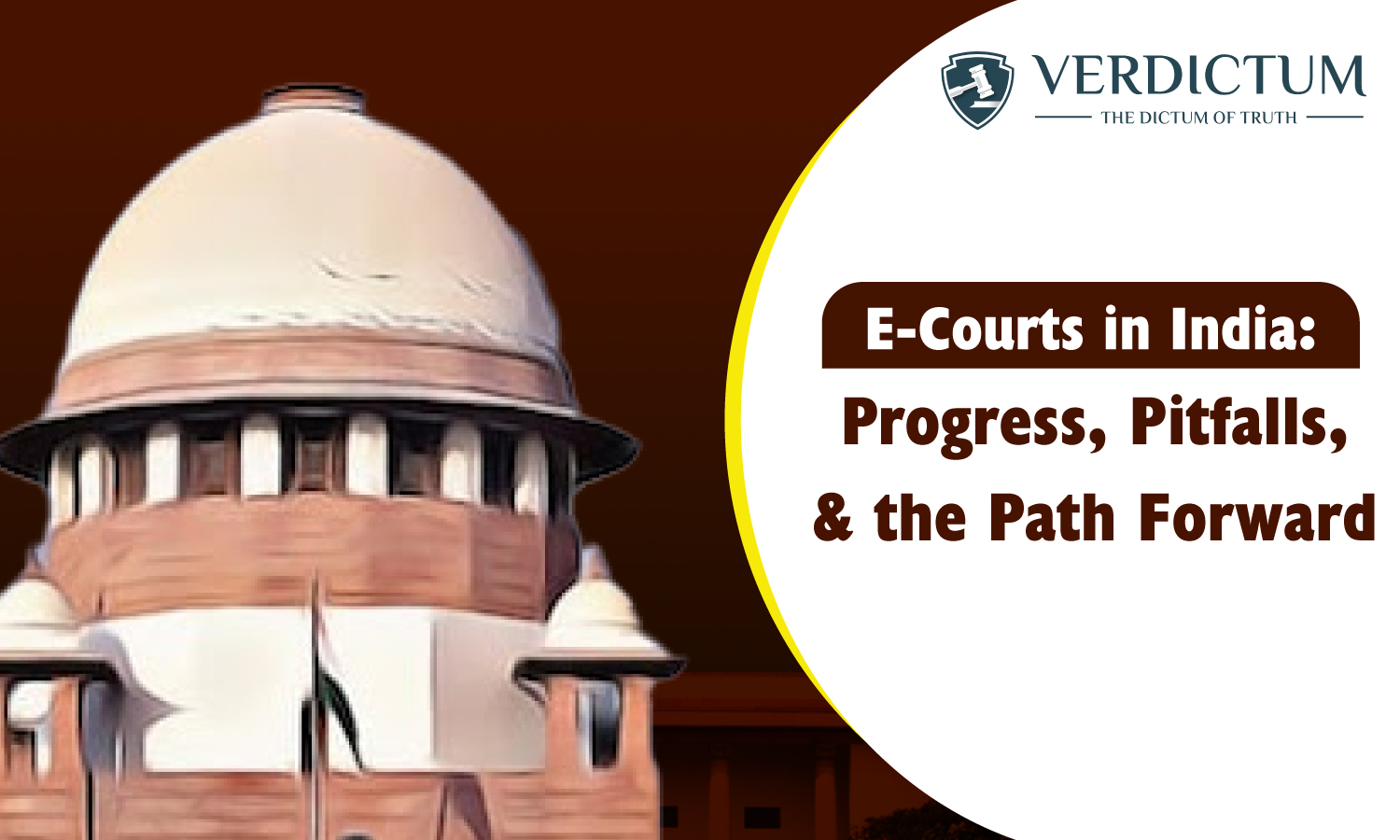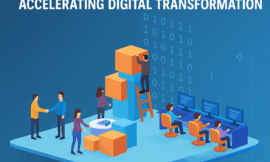1. E-Courts in India: Progress, Pitfalls, and the Path Forward
A significant backlog of cases, ineffective procedures, and restricted accessibility have long plagued the Indian judiciary. The E-Courts initiative was started as part of the National e-Government Plan (NeGP) to address these issues and use digital innovation to change the judiciary. The project’s goal is to make the justice delivery system more open, accessible, and effective. In order to create a more efficient and inclusive legal system, it is essential to assess the successes and failures of e-Court implementation as India moves closer to digital governance.
E-Courts use information and communication technology (ICT) to make the legal system more transparent, efficient, and accessible. People no longer need to physically attend courts to check case status, rulings, and hearing schedules when they may do it online. To save time and money, courts are using video conferencing to hold sessions. The National Judicial Data Grid (NJDG) and the Case Information System (CIS) are two tools that assist in tracking case progress and lowering pendency.
The Interoperable Criminal Justice System (ICJS) facilitates quicker data sharing through integration with law enforcement, correctional facilities, and forensic divisions. Resistance to change, inadequate infrastructure, the digital divide, and a lack of training all continue to impede widespread adoption. State-by-state variations in the use of technology underscore the necessity of uniform platforms and regulations. Prioritizing cyber security and data protection is necessary to secure sensitive legal data. E-courts primarily focuses in upgrading infrastructure, legal literacy which can help reduce the court backlogs and improve in judicial efficiency with justice to all.
2. Progress Made
1. The first is digital case management: Thousands of district and subordinate courts have implemented Case Information Systems (CIS). The e-Courts portal and mobile apps have made it possible for litigants and attorneys to obtain case status, court orders, and rulings online.
2. Virtual Hearings: Video conferencing has become increasingly common, particularly for bail hearings and other routine procedures, thanks to an acceleration during the COVID-19 pandemic.
3. The Supreme Court and High Courts have made hybrid hearings a formal practice. E-filing systems: These systems reduce administrative hassles and paperwork by allowing cases to be filed electronically in a number of courts.
4. Benefiting both attorneys and clients, it provides access around-the-clock. Text messaging services and digital display boards: o Up-to-date details about courtrooms and case listings. SMS notifications regarding case hearing dates and orders.
5. The first is the Interoperable Criminal Justice System (ICJS), which combines e-Courts with forensic, police, and jail systems. Enables the judiciary and law enforcement to communicate data more quickly.
6. A centralized database of case-related information, the court Data Grid (NJDG) allows for the tracking of court performance and pending cases.
4. Pitfalls and Challenges
A. Digital Divide:
Poor internet infrastructural facilities and lack of digital literacy in rural areas hinder access to online judicial services.
- Senior lawyers and rural litigants often struggle with the transition.
- Therefore, shift is frequently difficult for senior attorneys and litigants from rural areas.
B. Infrastructure Gaps: A lot of courts continue to be devoid of skilled staff, power backup, and basic IT infrastructure. Variability in application among states and judicial levels.
C. Privacy and Data Security: Issues with the privacy of private legal information.
- Many subordinate courts lack strong cybersecurity safeguards.
C. Opposition to Change: Adoption is slowed by traditional perspectives in the legal community and court.
- There is still an excessive dependence on paper records.
E. Lack of Uniformity: Interoperability is limited by the platforms and standards used by various governments and courts. Software solutions and defined protocols are required.
F. Training Deficiencies: Legal professionals, clerks, and judges frequently lack adequate instruction in digital tools.
5. The Path Forward
A. Digital Infrastructure Development: o Modernize hardware and connection in all court complexes, especially those in rural and isolated areas.
Make sure your data backup and power supplies are dependable.
B. Capacity Building and Training: o Consistent training courses for court employees, attorneys, and judges. o User-friendly interfaces to help older or less tech-savvy people.
C. Uniform Integration and Standards: o Create and execute national guidelines for judicial IT systems.
The NJDG, CIS, ICJS, and e-Filing platforms all integrate seamlessly.
D. Improving Accessibility: o Voice-based services and multilingual user interfaces for fair access. o Digital platforms that provide marginalized groups with legal assistance.
E. Strong Framework for Cyber security: o Encrypt communication and data storage systems.
To avoid data breaches, do routine audits and updates.
F. Public Awareness and Outreach to educate
- Awareness campaigns to educate citizens on how to access and benefit from e-Courts.
- Encourage legal literacy through online workshops and webinars.
While courts are connected to police, jails, and forensic departments through integration with the Interoperable Criminal Justice System (ICJS), the National Judicial Data Grid (NJDG) offers real-time data on cases that are pending and those that have been resolved. The Indian judiciary is to be modernized through the use of information and communication technology (ICT) through the E-Courts project, which is part of the National e-Government Plan (NeGP). It aims to improve the legal system’s effectiveness, accountability, accessibility, and transparency.
The e -Courts web and mobile apps provide access to court orders and decisions, virtual hearings, real-time case status tracking, SMS/email alerts, and online case filing (e-Filing), among other important features. Real-time information about cases that are pending or have been resolved is provided by the National Judicial Data Grid (NJDG), and courts can connect with law enforcement, correctional facilities, and forensic labs through integration with the Interoperable Criminal Justice System (ICJS).
The digital divide, poor infrastructure, inconsistency, and cyber security issues still exist despite significant advancements. India must make investments in infrastructure, capacity building, standardization, and inclusive digital access if it is to fully achieve the potential of e-Courts.
E-Courts are essentially a revolutionary step toward an Indian judiciary that is more responsive and focused on the needs of its citizens.
The e-Courts initiative has the potential to revolutionize India’s legal system by making it more efficient, open, and accessible to all citizens. Even though there have been great advancements, there are still issues with digital readiness, inclusion, and infrastructure. To guarantee that the promise of digital justice is realized for everyone, a cooperative strategy combining the judiciary, government, legal experts, and citizens is necessary.
📜 Looking you best Place for the Latest Supreme & High Court Judgments in India Whether you’re a law student, legal professional, or just someone who wants to stay informed, having the right sources makes all the difference! ⚖️ Verdictum, top platforms where you can find the latest Indian court judgments online:
Verdictum is a leading Indian legal news portal dedicated to providing accurate and timely updates on legal developments across the country. It offers comprehensive coverage of judgments from the Supreme Court of India, High Courts, and other significant legal news, making it a valuable resource for legal professionals, students, and anyone interested in the Indian legal system.
6. Key Features of Verdictum:
1. Extensive Legal Coverage: Verdictum covers a wide range of legal topics, including Supreme Court and High Court judgments, legal news, and updates on new legislation and government notifications.
2. Live Court Updates: The portal provides real-time updates on court proceedings, ensuring readers stay informed about the latest legal developments.
Original Post Content Sources Here: E-Courts in India: Progress, Pitfalls, and the Path Forward



